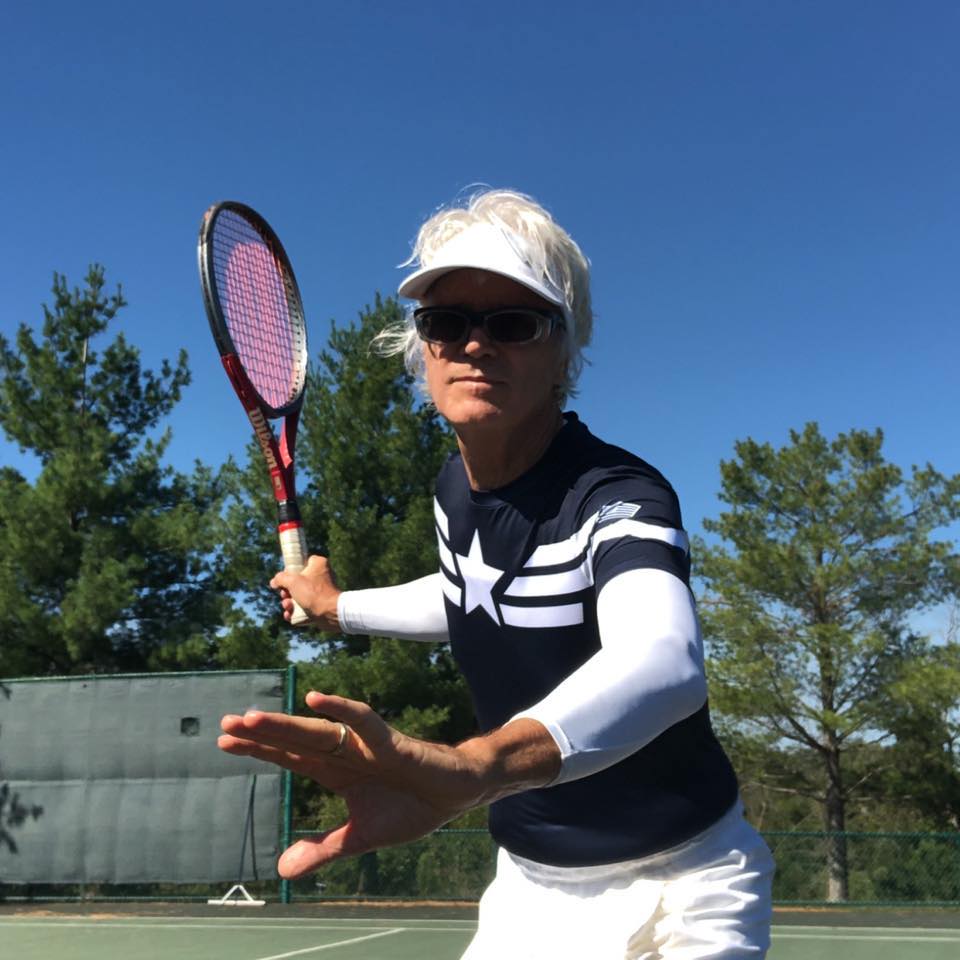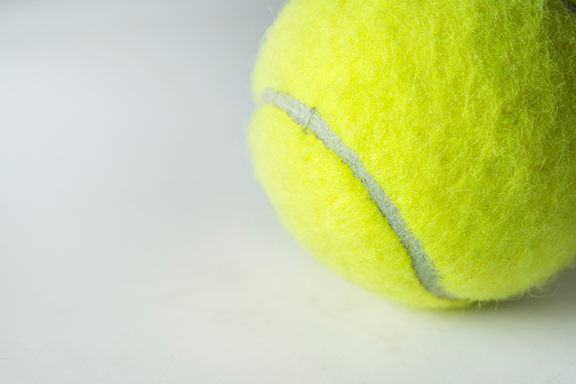Tennis is, in general, a mix of power and control. Every time we recruit more power from the core body musculature, every time we free up some glitch in your service motion, every time we get more leg surge in your groundstroke, we need to add more spin into your shot in order to bring that powerful shot back down into the court. Any 10 year old can hit the ball long. But getting that same player to hit their hardest into the limited size of a tennis court requires adding control, which means spin.
Spin in general means hitting the ball from low to high. In terms of ground strokes that means starting the racket motion below the ball and ending up above the ball. Either racquet or the human holding it has to start from below the ball and get higher.
Sometimes I use an analogy of wrestling to explain this situation. If in wrestling one participant is lower than the other, in general that person has leverage on the other wrestler and controls them. In the case of tennis the question is, is the ball schooling you or are you schooling the ball? In other words, is the ball getting lower than you or are you getting lower than the ball?
Another thing that I like to mention in a lesson situation is that the ball really is stupid. If the ball was brilliant, it wouldn’t bounce up. It would just hit the ground and take off running in some unpredictable angle. But it bounces up, every time.
If and when it bounces up, you can get under it, because, after all, you have the brilliant intelligence to put your racquet wherever you like, and below the ball is best, to create (top)spin.
There are a number of drills, mental patterns and habits that I play with in order to support getting under the ball:
- Hit the ball on the chin: Think of the ball as a face, and that you are going to hit it on the chin and not on the nose. To do that you will need to swing from low to high
- Plan to meet the ball at 1/2 of its height as it comes to you. Doing that will mean coming up at the last microsecond
- Think of the path of flight of the ball before it bounces as a mirage – only take the height of the ball after the bounce seriously – that is when you really need to see it well, and then come up through it.
- When the ball is at it’s highest, you racket should be at it’s highest – and when it is at it’s lowest (bouncing) your racket should be at it’s lowest, already swinging toward contact
- To get lower without a lot of bending over, get your feet wider apart, and then surge up on contact
Try some of those tips out, and then you’ll be controlling the ball, rather than the opposite.


